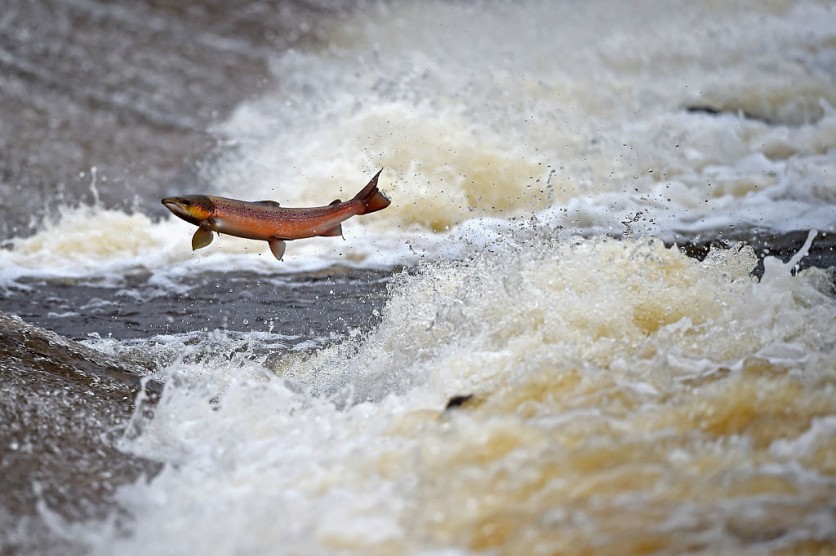A new challenge has emerged amid the awe-inspiring salmon run, where mature wild Atlantic salmon embark on an extraordinary journey upstream to spawn. Rising water temperatures, a consequence of climate warming, present a formidable obstacle for these resilient creatures.
Since they are accustomed to the cold ocean, the salmon grapple with warmer river temperatures during their summer migration, a critical phase in their life cycle.

The Danger of Climate Warming to Salmon
It is worth noting that climate warming is causing a multifaceted impact on salmon populations. Rising temperatures in rivers and streams disrupt the delicate balance these cold-water fish rely on for survival.
As salmon migrate upstream for spawning, warmer waters can lead to increased stress levels and hinder their ability to navigate obstacles. Additionally, altered temperature patterns can disrupt the timing of crucial life cycle events, such as hatching and migration.
Natural cold-water havens, known as thermal refuges, offer a respite for salmon, allowing them to de-stress before continuing their arduous journey. These refuges are crucial, often determining the survival of these migrating fish. However, they are becoming increasingly scarce, posing a threat to the populations.
In response, a collaborative effort between the Nova Scotia Salmon Association and Dalhousie University embarked on a four-year science project focused on mapping these vital thermal refuges.
Kathryn Smith, a Ph.D. candidate in the Dalhousie Coastal Hydrology Lab, spearheaded the initiative, recognizing the invaluable insights of local anglers in pinpointing these refuges.
Leveraging her civil engineering background, Smith pursued an innovative approach: engineering artificial cold-water habitats to bolster the salmon's migration.
Read Also : Dominica's Mountain Chicken Frog Vanishes in Record Time, Revealing Shocking Ecological Crisis
Man-Made Refuges for Salmon
This pioneering intervention sought to determine if the fish would readily inhabit these man-made refuges. Smith and her team employed two distinct strategies for creating thermal refuges: an active and a passive approach.
The active method involved pumping cold water (9 °C) into a warmer river (30 °C) from a municipal well. This intervention, spanning two weeks in July and one week in August, demonstrated a significant downstream effect, with the thermal plume extending over 60 meters.
The passive approach entailed excavating an underground trench to divert a river meander. Shielded from direct sunlight, the water would naturally cool before being reintroduced into the river, effectively lowering the average water temperature.
While this approach yielded a more modest cooling effect downstream, it remained "meaningful," according to Smith, especially for cold-water species capable of detecting minute temperature variations.
Both methods were reported to be successful, as underwater cameras captured salmon congregating in these engineered thermal refuges. During a heatwave coinciding with the intervention, more fish sought shelter in these areas.
Looking ahead, Smith aims to scale up these pilot interventions, collaborating with conservation associations to quantify the impact of additional thermal refuges on wild Atlantic salmon's health and migration success.
Related Article : Can Cats Glow in the Dark? New Study Says 125 Mammal Species Have 'Apparent Fluorescence'

ⓒ 2025 TECHTIMES.com All rights reserved. Do not reproduce without permission.




